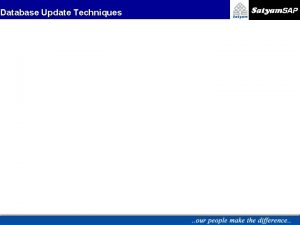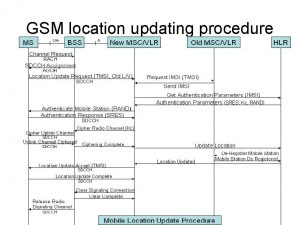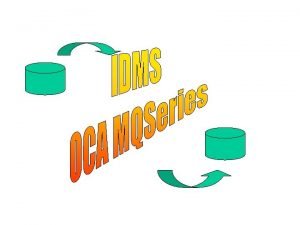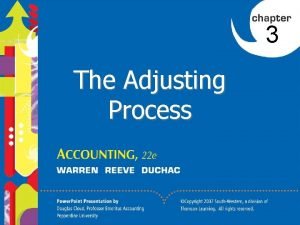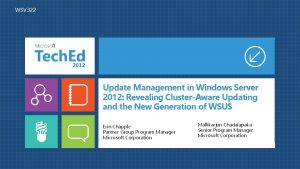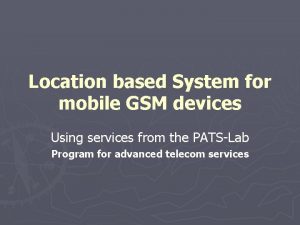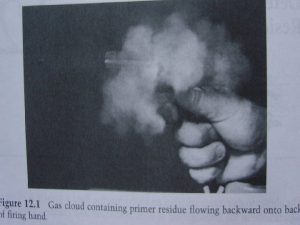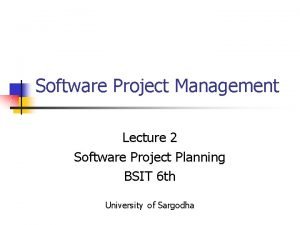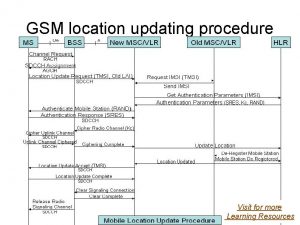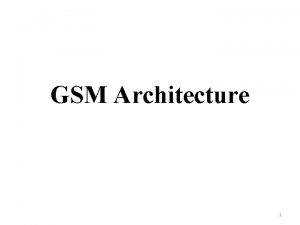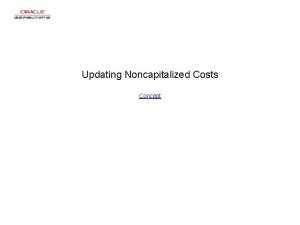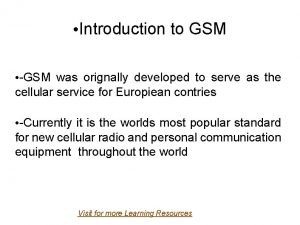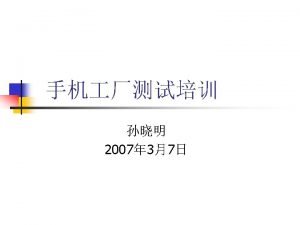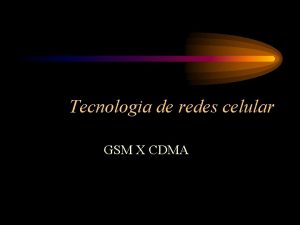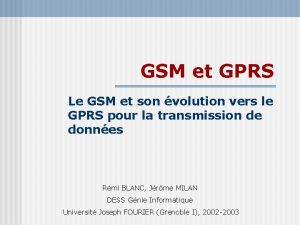GSM location updating procedure Step wise procedure Step












- Slides: 12

GSM location updating procedure

Step wise procedure Step 1 The MS detects that it has entered a new Location Area and transmits a Channel Request message over the Random Access Channel (RACH). Step 2 Once the BSS receives the Channel Request message, it allocates a Stand-alone Dedicated Control Channel (SDCCH) and forwards this channel assignment information to the MS over the Access Grant Channel (AGCH). It is over the SDCCH that the MS will communicate with the BSS and MSC.

Step 3 The MS transmits a location update request message to the BSS over the SDCCH. Included in this message are the MS Temporary Mobile Subscriber Identity (TMSI) and the old Location Area Identification (old. LAI). The MS can identify itself either with its IMSI or TMSI. The BSS forwards the location update request message to the MSC.

Step 4 The VLR analyzes the LAI supplied in the message and determines that the TMSI received is associated with a different VLR (old VLR). In order to proceed with the registration, the IMSI of the MS must be determined. The new VLR derives the identity of the old VLR by using the received LAI, supplied in the location update request message. It also requests the old VLR to supply the IMSI for a particular TMSI.

Step 5 The new VLR sends a request to the HLR/AUC (Authentication Center) requesting the “authentication triplets” (RAND, SRES, and Kc) available for the specified IMSI. Step 6 The AUC, using the IMSI, extracts the subscriber's authentication key (Ki). The AUC then generates a random number (RAND), applies the Ki and RAND to both the authentication algorithm (A 3) and the cipher key generation algorithm (A 8) to produce an

Step 7 The MSC/VLR keeps the two parameters Kc and SRES for later use and then sends a message to the MS. The MS reads its Authentication key (Ki) from the SIM, applies the received random number (RAND) and Ki to both its Authentication Algorithm (A 3) and Cipher key generation Algorithm (A 8) to produce an authentication Signed Response (SRES) and Cipher Key (Kc). The MS saves Kc for later, and will use Kc when it receives command to cipher the channel.

Step 8 The MS returns the generated SRES to the MSC/VLR. The VLR compares the SRES returned from the MS with the expected SRES received earlier from the AUC. If equal, the mobile passes authentication. If unequal, all signaling activities will be aborted. Step 9 The new MSC/VLR requests the BSS to cipher the radio channel. Included in this message is the Cipher Key (Kc), which was made available earlier during the authentication.

Step 10 The BSS retrieves the cipher key, Kc, from the message and then transmits a request to the MS requesting it to begin ciphering the uplink channel. Step 11 The MS uses the cipher key generated previously when it was authenticated to cipher the uplink channel, and transmits a confirmation over the ciphered channel to the BSS.

Step 12 The BSS upon ciphering the downlink channel sends a cipher complete message to the MSC. At this point, we are ready to inform the HLR that the MS is under control of a new VLR and that the MS can be de-registered from the old VLR. Step 13 The new VLR sends a message to the HLR informing it that the given IMSI has changed locations and can be reached by routing all incoming calls to the VLR address included in the message.

Step 14 The HLR requests the old VLR to remove the subscriber record associated with the given IMSI. The request is acknowledged. Step 15 The HLR updates the new VLR with subscriber data (mobiles subscriber’s customer profile). Step 16 The MSC forwards the location update accept message to the MS. This message includes the new TMSI.

Step 17 The MS retrieves the new TMSI value from the message and updates its SIM with this new value. The mobile sends then an update complete message back to the MSC. Step 18 The MSC requests from the BSS that the signaling connection be released between the MSC and the MS. Step 19 The MSC releases its portion of the signaling connection when it receives the clear complete

Step 20 The BSS sends a "radio resource" channel release message to the MS and then frees up the Stand-alone Dedicated Control Channel (SDCCH) that was allocated previously. The BSS then informs the MSC that the signaling connections has been cleared.
 Database commit is triggered by
Database commit is triggered by Location update in gsm
Location update in gsm Step 1 step 2 step 3 step 4
Step 1 step 2 step 3 step 4 He who walks with the wise grows wise
He who walks with the wise grows wise Batch updating (for oca & db)
Batch updating (for oca & db) The updating of accounts is called the adjusting process.
The updating of accounts is called the adjusting process. Sccm cluster aware updating
Sccm cluster aware updating Gsm location based solution
Gsm location based solution Dermal nitrate test in hindi
Dermal nitrate test in hindi Eyebrow waxing procedure milady
Eyebrow waxing procedure milady Activity identification approaches in spm
Activity identification approaches in spm Planning definition in management
Planning definition in management Step wise function
Step wise function
